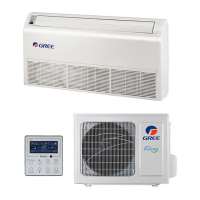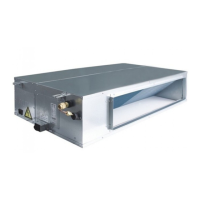DC Inverter U-match Series Duct Type Unit
70
5.4.3 Repair to Intrinsically Safe Components
Do not apply any permanent inductive or capacitance loads to the circuit
without ensuring that this will not exceed the permissible voltage and current
permitted for the equipment in use.
Intrinsically safe components are the only types that can be worked on while
live in the presence of a flammable atmosphere. The test apparatus shall be at the
correct rating.
Replace components only with parts specified by the manufacturer. Other parts
may result in the ignition of refrigerant in the atmosphere from a leak.
5.4.4 Cabling
Check that cabling will not be subject to wear, corrosion, excessive pressure,
vibration, sharp edges or any other adverse environmental effects. The check shall
also take into account the effects of ageing or continual vibration from sources such
as compressors or fans.
5.4.5 Detection of Flammable Refrigerants
Under no circumstances shall potential sources of ignition be used in the
searching for or detection of refrigerant leaks. A halide torch (or any other detector
using a naked flame) shall not be used.
5.4.6 Removal and Evacuation
When breaking into the refrigerant circuit to make repairs – or for any other
purpose –conventional procedures shall be used. However, it is important that best
practice is followed since flammability is a consideration. The following procedure
shall be adhered to:
(1) Remove refrigerant.
(2) Purge the circuit with inert gas.
(3) Evacuate.
(4) Purge again with inert gas.
(5) Open the circuit by cutting or brazing.
The refrigerant charge shall be recovered into the correct recovery cylinders.
The system shall be “flushed” with OFN to render the unit safe. This process may
need to be repeated several times. Compressed air or oxygen shall not be used for

